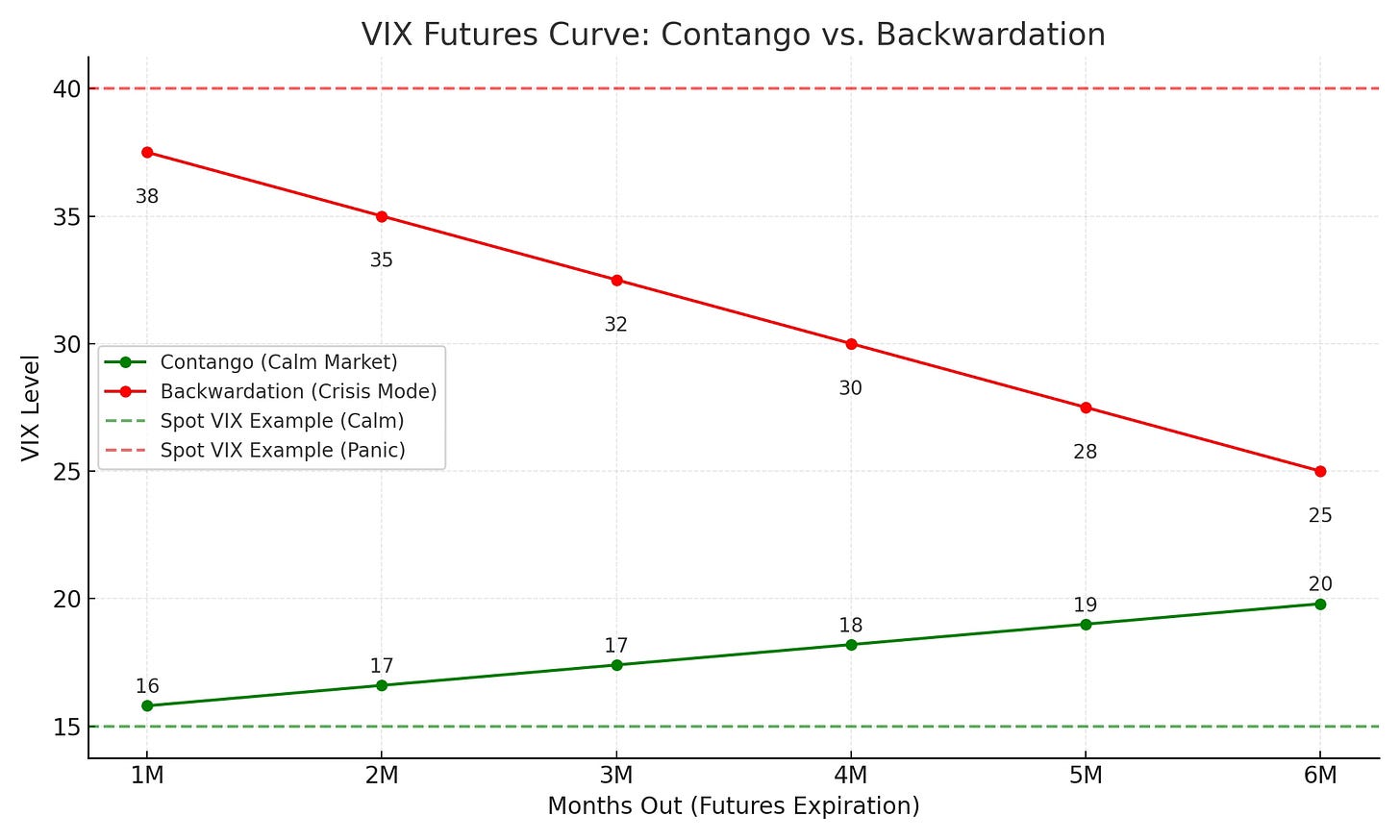When people talk about the VIX, they usually mean the “fear gauge” — the index that measures expected volatility in the S&P 500. But there’s another important side to the story: VIX futures.
For beginners, VIX futures may sound complex, but they’re simply a way for traders and investors to bet on where volatility is headed. Understanding how they work can give you new tools for risk management, speculation, and market timing.
What Are VIX Futures?
The VIX index itself is not directly tradable. It’s a calculated number based on S&P 500 options.
VIX futures are contracts that allow traders to speculate on what the VIX will be at a certain date in the future.
For example:
A July VIX future represents what traders think the VIX will be in July.
If you buy it, you’re betting volatility will rise by then.
If you sell it, you’re betting volatility will fall.
Think of them as a “futures market for fear.”
Why Do VIX Futures Exist?
The VIX can spike suddenly during market stress. Futures give traders and institutions a way to:
Hedge: Protect their portfolios against volatility spikes.
Speculate: Bet on rising or falling volatility.
Price risk: Futures prices reflect the market’s expectations of future volatility, which helps traders gauge sentiment beyond today.
Why VIX Futures Are Often Less Volatile Than the VIX
One of the most surprising things for beginners is that VIX futures don’t move as wildly as the spot VIX.
VIX Index: Can jump 30%, 50%, even 100% in a single day.
VIX Futures: Move much more gradually.
Why? Because futures are based on the expected average volatility over a month into the future, not just today. A one-day panic may spike the spot VIX, but futures smooth out the move since volatility may calm down before expiration.
For example: During the COVID crash in March 2020, the VIX Index spiked above 80. But nearby VIX futures traded well below that, because traders expected volatility to cool somewhat within a month.
Contango and Backwardation in VIX Futures
The shape of the VIX futures curve — whether it’s in contango or backwardation — is one of the most important features to understand:
Contango (normal state):
Futures prices are higher than today’s VIX.
This happens most of the time, because volatility usually reverts higher in the future.
Example: Spot VIX = 15, but 3-month futures = 18.
Impact: Traders holding long futures may lose money over time as contracts roll down toward the lower spot level.
Backwardation (crisis mode):
Futures prices are lower than today’s VIX.
This happens when fear is extremely elevated now, but expected to ease later.
Example: Spot VIX = 50, but 3-month futures = 30.
Impact: Traders long futures may benefit, since the futures can rise toward the elevated spot level.
Key takeaway: Whether the curve is in contango or backwardation can make or break trading strategies in volatility products (like VXX, UVXY, SVXY, or ETFs linked to VIX futures).
How Traders Can Use VIX Futures
1. Hedging Against Market Crashes
If you own a stock portfolio, buying VIX futures can provide insurance. When markets drop, the VIX usually spikes, and futures gain.
2. Speculating on Volatility Trends
Expect a storm? Go long VIX futures.
Expect calm? Short them.
3. Reading the Market’s Expectations
Even if you don’t trade them, watching the futures curve gives insight into what the market expects in the weeks ahead.
Everyday Applications for Retail Traders
Check the curve daily: Is it in contango or backwardation? That tells you whether fear is building or fading.
Match strategy to regime: High contango favors volatility sellers; backwardation favors volatility buyers.
Avoid surprises: Ahead of events like Fed meetings or elections, VIX futures can give early warnings about elevated volatility expectations.
Key Takeaways
The VIX Index measures today’s fear, while VIX futures price in future expectations.
Futures are less volatile than the index because they average out volatility over time.
The futures curve (contango vs. backwardation) plays a crucial role in profitability and signals the market’s outlook.
For traders, VIX futures are not just a trading instrument — they’re a sentiment compass.
Final Thoughts
VIX futures may look intimidating, but they boil down to a simple idea: a way to trade or measure what volatility will look like tomorrow, next week, or next month.
In calm markets, futures sit above spot (contango).
In crises, futures sit below spot (backwardation).
In either case, they help traders hedge, speculate, and interpret the market’s mood more effectively.
For everyday traders, you don’t need to jump straight into trading them. Simply watching the curve and noticing whether it’s pricing in calm or panic can sharpen your understanding of the market.




